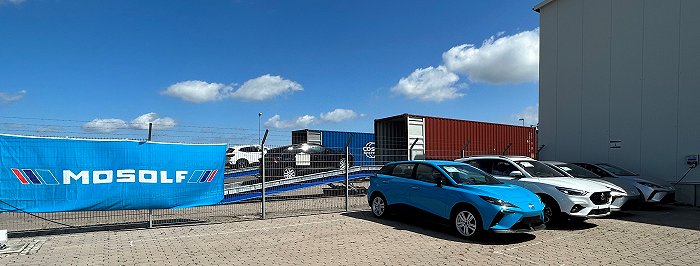In 2023, China’s car exports increased by 522.1 million units year-on-year, surpassing Japan to become the world’s largest car exporter. At this year’s Beijing Auto Show, overseas dealers flocked in and Chinese car brands launched global models intensively to accelerate their overseas expansion. For car companies, both shipping capacity and product competitiveness are equally important when going global. The global car shipping market remains hot, with car transport ship rental prices increasing tenfold in the past four years. The global shortage of shipping capacity poses a real challenge for Chinese car brands experiencing rapid export demand growth. Jörg Mosolf, Chairman and CEO of Mosolf Group, stated in an interview with Interface News and other media that car shipping logistics for going global requires a comprehensive plan to help vehicles complete sea transport, unload at ports, and reach their sales destinations. Mosolf Group is one of the largest logistics service providers in Europe, transporting over 3 million vehicles annually. Their Chinese car brand partners include MG, NIO, Great Wall, and BYD. In 2023, Mosolf transported 11,000 MG cars to the German market and plans to increase this number to 24,000 in 2024.
SAIC Group, the parent company of MG, is a leading Chinese automaker expanding overseas. In 2023, overseas sales reached 1.208 million units, with MG accounting for over 840,000 units. SAIC was the first domestic automaker to operate its own fleet for overseas shipping, with its subsidiary Anji Logistics now having the largest self-owned fleet among Chinese automakers.
Currently, in addition to SAIC, BYD’s car transport ships are also in use. Chery and GAC have also begun to layout in this area, hoping to ensure the stability and economy of export transportation. The key advantage of Chinese automotive products going overseas is cost-effectiveness. High shipping costs will affect the final selling price, weakening their competitiveness in local markets. Jörg Mosolf believes that Chinese car manufacturers can ensure the timely delivery of their products and the stability of their business by cooperating with local shipping companies to layout maritime exports, so that they are not affected by external factors and can reasonably estimate demand and make adjustments. Logistics groups with heavy assets may have advantages in local resource integration and operations. When vehicles reach the port, ensuring smooth unloading and transportation to the destination instead of being left at the port depends on the cooperation between logistics companies and port operators, as well as the full allocation of their own resources such as trucks, port resources, and car stations. Taking the Mosolf Group as an example, it has large car stations in the four major ports in Germany, with transportation tools including more than 1,000 trucks and 2 roll-on/roll-off ships, 80% of which are self-operated. The heavy asset investment allows them to have certain advantages in cost control and operational efficiency without having to rent assets from other companies. Shipping is the primary way for exporting new energy vehicles, and safety issues during transportation of new energy vehicles in the past two years have also attracted widespread attention. The power source of new energy vehicles is lithium batteries, which can self-ignite or even explode in extreme conditions and improper operation, making the sea transportation of electric vehicles extremely strict, requiring car logistics companies to have professional experience. During transportation, a software-controlled system is needed to monitor the battery status at all times to ensure safe transportation, with emergency plans in place to handle accidents, such as using special blankets to extinguish fires. According to Joerg Mosolf, all process information from loading to unloading is recorded in a database, and the vehicle is monitored throughout the entire transportation period. The European market has always had the highest automotive product regulations and standardization thresholds, with a strong traditional automotive industry foundation. In the past, Chinese automotive brands exported or built more in Asia and Africa, making it difficult to enter the European market. Now, Chinese automotive brands see Europe as the next stop in their globalization process. Chery and BYD are building factories for localized production in Europe, SAIC is in the site selection process, and Great Wall plans to cover most of the European market by 2025. Joerg Mosolf believes that due to the different development stages and positions of different automotive brands in overseas markets, Chinese automotive brands entering the European market will initially face a more challenging market environment. “MG is in a rapid development stage, with not too much inventory accumulation. However, newly entering companies need to price their products reasonably and establish a complete sales network and after-sales service system. Currently, electric vehicle pricing is generally on the higher side.” He said European logistics service providers can help new car brands enter the local market by leveraging resources, understanding regulations, and collaborating with local institutions.

